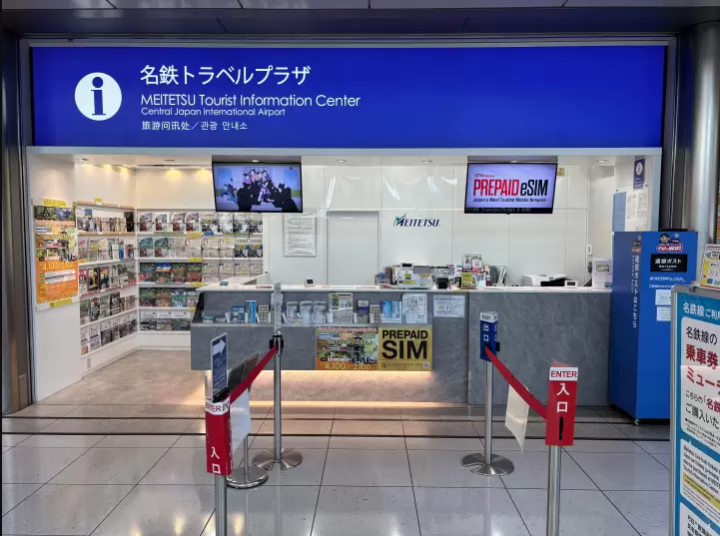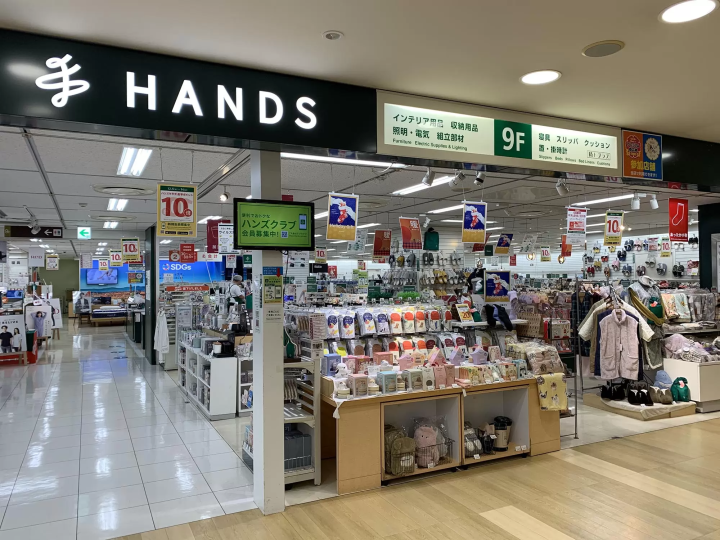Kyoto's Miyazu City: Enjoy Amanohashidate Alongside Local Cuisine and History!

Kyoto's Amanohashidate ranks among the "Three Scenic Views of Japan" along with Miyagi's Matsushima and Hiroshima's Miyajima. This article features a new experience called matanozoki-ichiryumanbai, as well as some popular restaurants and historic spots nearby.
What Kind of Place Is Miyazu City?

Picture courtesy of Miyazu City
Miyazu City is a sightseeing spot and one of Kyoto Prefecture's leading port towns. It's also known for Amanohashidate, ranked among one of the "Three Scenic Views of Japan" (Nihon Sankei).
Additionally, it has a long history. People began to inhabit the area about 2,200 years ago when Amanohashidate was first formed. During the Edo Period, cargo ships known as kitamae-bune connected Hokkaido with Osaka. As a result of this burgeoning trade and commerce, Miyazu City began to flourish. It was even referred to in a phrase acknowledging "the Gion (*1) of the South" and "Miyazu in the North."
In addition to Amanohashidate, Miyazu City has little-known gourmet spots and famous sightseeing locations where visitors can trace the area's history on foot.
This article introduces Amanohashidate's latest specialty products, recommended restaurants, and historic spots.
*1 Gion: An entertainment quarter in Kyoto City that has flourished since ancient times.
Matanozoki☆Ichiryumanbai: Try This Good-Luck Experience in Amanohashidate!
Amanohashidate can also be considered the symbol of Miyazu City. Along with Miyagi Prefecture's Matsushima and Hiroshima Prefecture's Miyajima, Amanohashidate is one of the "Three Scenic Views of Japan" (Nihon Sankei).
Amanohashidate is a long sandbar extending north to south for about 3.6 kilometers, connecting Miyazu City's Miyazu Bay and the Inland Sea's Aso-kai. When seen from Miyazu's Amanohashidate View Land, it looks like a dragon ascending into the sky (hiryukan).

Picture courtesy of Miyazu City
There are a variety of ways to enjoy Amanohashidate. The scenic views from the hillside are breathtaking. Plus, you can traverse the sandbar by bicycle or on foot and enjoy beautiful flowers and foliage each season.

But perhaps the most popular experience is a pose known as matanozaoki. This involves standing with your back to Amanohashidate, then bending forward in a position that allows you to look between your legs back at the view (see photo above).
While in this pose, you'll see heaven and earth get reversed! The sea resembles the sky, and the Amanohashidate sandbar looks like a dragon extending to the heavens.
These matanozoki viewing platforms have been placed at various spots, including Amanohashidate View Land and Amanohashidate Kasamatsu Park.

Then, making things even more enjoyable, a new and improved experience called matanozoki☆ichiryumanbai (Japanese) began in April 2023!
Matanozoki☆ichiryumanbai is a unique sightseeing experience where visitors ascend a hill (shoryu) to reach the matanozoki platform, then descend (koryu) back down.
Firstly, following the custom of shoryu, visitors take a lift or cable car to get to Amanohashidate View Land or Amanohashidate Kasamatsu Park.
Upon arrival, visitors will purchase a ball called "ryunonegaidama" and make a wish. There are six different negaidama balls available, including shobaihanjo (wish for business prosperity), ryoenkigan (wish for a good marriage partner), and hisshokigan (wish for victory in some competition or event).
Next, take the ryunonegaidama ball in one hand. Make your wish while looking through your legs (matanozoki) at the view behind you. After completing matanozoki, the custom of koryu is followed, and visitors descend back down the mountain.

In the vicinity of Amanohashidate, there is Chionji Temple, Motoise Kono Shrine, and Nariaiji Temple. Each spot brings good luck to worshipers in connection with some of the just mentioned ryunonegaidama balls.
For example, Chionji Temple brings good luck with business prosperity (shobai hanjo) and other wishes. Motoise Kono Shrine brings good fortune to those looking for a suitable marriage partner (ryoen kigan) and other prayers. Lastly, Nariaiji Temple brings good luck with victory in competitions (hissho kigan) and other wishes.
After descending the mountain, you'll need to get your ryunonegaidama ball blessed at the shrine or temple that corresponds with your particular wish. There's also a commemorative stamp available. By properly going through the steps mentioned above, visitors will accumulate power through this matanozoki experience.
Matanozoki☆ichiryumanbai is available year-round but can be busy due to its popularity. It's best to go during the off-season between February and June when you can fully enjoy the scenic views without sightseeing crowds.
Recommended Miyazu Cuisine: Enjoy Japan's Past and Present-Day Food Culture!
Miyazu City faces the Sea of Japan. At fishing ports such as Yoro and Kunda, you can buy fresh fish and seafood directly on the docks. Visitors can also enjoy the fresh bounty of the sea unloaded at various fishing ports.
Additionally, an abundance of seasonal vegetables is cultivated in Miyazu City. There are many popular gourmet spots nearby where visitors can enjoy trying various dishes that use many of these vegetables.
Tsuruya Shokudo

Picture courtesy of Miyazu City
Tsuruya Shokudo (Japanese Google map)—whose motto is "food that's both produced and consumed locally"—is a restaurant just a stone's throw away from Amanohashidate Cable Car's Fuchu Station. The star attraction is the "Tango Jewel Rice Bowl." With this donburi dish, diners can enjoy Miyazu City's fresh seafood to their heart's content.
The main ingredient gracing this dish is seasonal squid. In the summer, oval squid (shiro-ika) appears, while you'll see beautifully arranged bigfin reef squid (aori-ika) in winter.
Nestled next to the squid and decorating this rice bowl is akamoku seaweed (devil weed) harvested in Yoro Ward, bai shellfish only distributed in some local areas, and fresh seasonal fish (see photo above).
This donburi dish introduces visitors to Miyazu City's freshly caught seafood and fish. It's a highly recommended restaurant for fresh seafood lovers.
Hanano

Picture courtesy of Miyazu City
Just ten minutes on foot from Miyazu Station is where you'll find Charoku Bekkan, a ryokan serving up seasonal kaiseki cuisine.
At Restaurant Hanano (Japanese Google map) on the ryokan premises, diners can enjoy seafood cuisine. This includes Matsuba crab and Yellowtail shabu shabu that uses fresh seasonal ingredients.

Picture courtesy of Miyazu City
This delicious cuisine can be enjoyed whether you stay the night at Charoku Bekkan or simply make a day trip to the city. Additionally, it's possible to take a dip in the bath at Miyazu Hot Springs by day trip.
Amanohashidate Winery

Picture courtesy of Miyazu City
Amanohashidate Winery (Japanese Google map) is a 20-minute bus ride from Amanohashidate Station. There's a large vineyard here, allowing visitors to enjoy wines made with local grapes.
Amanohashidate Winery has a spectacular location overlooking Amanohashidate from one side. In addition to visiting the vineyard and brewery, you can also enjoy wine tasting.
Amanohashidate wines are fresh and fruity, with none of the wines undergoing any kind of heat treatment before bottling. Even after the wines have been bottled, the aging process continues. Then, it develops a smooth and mellow taste with time.
There's also a cafe and restaurant on the winery premises, making this an ideal spot for taking a short break.
Miyazu Curry Yakisoba: A Delicious Local Specialty!

Picture courtesy of Miyazu City
Miyazu Curry Yakisoba has been receiving lots of attention recently as a Miyazu City specialty dish. As the name implies, this is a dish that combines curry with yakisoba.
Miyazu Curry Yakisoba is served at a shop called Cafe Rest Erina (Japanese Google map). Diners choose between two different types: the wet type which is like soup curry, and the dry type which allows you to savor fresh, crunchy vegetables.
Many diners tend to choose the soup curry-like wet type. After eating the yakisoba, you can add white rice to the leftover curry sauce. This allows you to combine the best of the curry and noodles.
Historic Spots in Miyazu City Accessible on Foot
Miyazu City has had a flourishing history that rivals Gion, one of Kyoto's major sightseeing destinations. Here, buildings that reflect Japanese history and culture alongside many old townscapes remain today.
Motoise Kono Shrine

Picture courtesy of Miyazu City
One spot where you can feel local history is Motoise Kono Shrine (Japanese Google map), located in Miyazu City's Ogaki area.
Amaterasu-Omikami (sun deity) and Toyouke-no-Okami (deity of agriculture) are both enshrined at Ise Jingu Shrine. According to legend, Toyouke-no-Okami left Motoise Kono Shrine when called to Ise Jingu Shrine by Amaterasu-Omikami. Hence, Kono Shrine is also referred to as Moto-Ise (literally "Origin of Ise").
Presently, Amaterasu-Omikami and Toyouke-no-Okami are enshrined separately at Mie Prefecture's Ise Jingu Shrine in the inner and outer shrine buildings. Even throughout history, Motoise Kono Shrine is the only place where Amaterasu-Omikami and Toyouke-no-Okami lived together.
For this reason, Motoise Kono Shrine is said to be an important shrine in Japanese history.
To get to Motoise Kono Shrine—the best power spot in Tango Province (present-day northern Kyoto Prefecture)—you can go across Amanohashidate. From the torii gate, there's a straight route leading to the shrine's worship hall (haiden).
The shrine building was built using an unusual architectural style known as shinmei-zukuri. On its railings, you can also see the five-colored suetama, which are jewel-shaped decorations.
Chionji Temple

Picture courtesy of Miyazu City
Just a five-minute stroll from Amanohashidate, you'll find Chionji Temple (Japanese Google map).
Monju Bosatsu, the Buddhist god of wisdom and intellect, is enshrined here. Every year many students and those preparing for entrance exams visit to pray for personal and academic success.

Picture courtesy of Miyazu City
On the temple precincts, there's a tahoto-style pagoda—a designated National Important Cultural Property—and a bathtub from ancient times (tetsuyubune). When visiting here, you'll certainly feel the magnificent history of the area.
Even today, historic streetscapes remain in Miyazu City. Simply going for a walk can be an enjoyable experience, allowing you to feel like you've accidentally wandered into a completely different time period!
Access to Miyazu City
It takes about two hours and 30 minutes to get to Miyazu City from Kyoto Station. First hop on the JR Sanin Main Line at Kyoto Station and then partway transfer to the Kyoto Tango Railway. When coming from Osaka, first take the JR Fukuchiyama Line and transfer to the Kyoto Tango Railway. Total one-way travel time is about two hours and 40 minutes.
When traveling by car, it takes about two hours to get to Miyazu City whether departing from Kyoto or Osaka.
Kyoto Prefecture's Miyazu City has the famous sightseeing destination Amanohashidate, countless restaurants, and many historic spots worth visiting.
While soaking up Amanohashidate's unique power, why not spend a memorable day exploring local gourmet and historic spots on foot?
Author by a.Nagino
Main image courtesy of Miyazu City
Sponsored by Miyazu City
MATCHA's promotional account for corporate and local government advertising. We aim to provide useful information to our readers in an enjoyable manner.


























![[Wakayama Sign] Plums and plum wine](https://resources.matcha-jp.com/resize/720x2000/2025/12/08-252248.webp)

![[2025 Update] Introducing free Wi-Fi spots in Tokoname City , Aichi Prefecture](https://resources.matcha-jp.com/resize/720x2000/2025/12/16-253074.webp)

